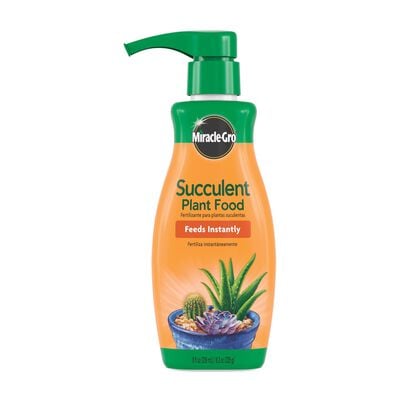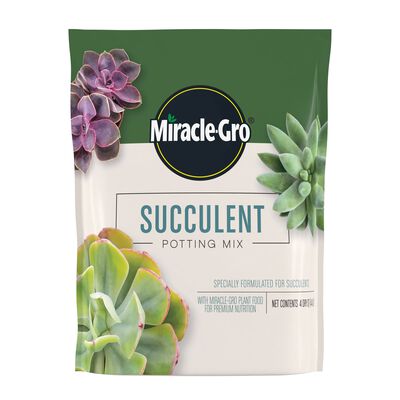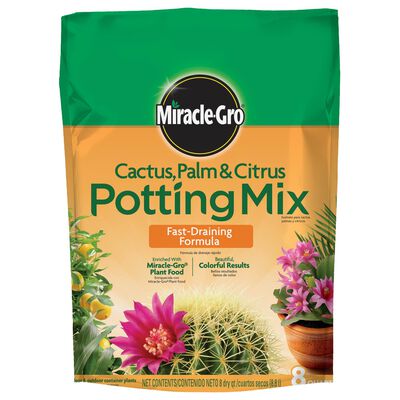
Your Guide To: Succulents & Cacti
Everything you need to know to care for a succulent and cactus.
Low-maintenance but high on character, succulents and cacti may be perfect houseplants — especially for new or neglectful gardeners. Since they're designed to store water, even the small task of watering them is fairly infrequent. Like a good housemate, these plants brighten things up and are very happy left (mostly) on their own.
Slow-growing and generally compact, succulents and cacti add a hint of what grows wild to any small, sunny space. With their unique and sometimes quirky shapes and structures they can add a distinctive look to your decor. If your work space gets enough sunlight, they may be great office companions due to their easy-going nature, plus they can perk things up with their bright, clean greenery. Enjoy them individually or arrange several in a row to add more shapes, textures, and interest to your home design.
How To Keep A Succulent or Cactus Happy
How Much Lighting Does a Succulent or Cactus Need?
When you're scoping out a home for your succulent or cactus, choose the sunniest spot you can find, as it will grow best in bright sunlight, preferring at least six hours a day. You can also add a fluorescent lamp or grow light to its environment to help.
Like most plants, succulents and cacti will lean toward the sun, so be sure to rotate the pot often. This will encourage good, straight posture.
How Do I know When To Water My Succulent or Cactus?
How do I know when to water my succulent or cactus? | Watering
Succulents and cacti are used to a dry climate, which is why they store water in their leaves and roots. You only need to water them a few times each month. Water the soil — not the stems, leaves, or paddles — soaking it until water runs out the pot's drainage hole. For the best results, you'll need to let the soil become almost completely dry between waterings. Test the soil by feeling the top two inches of dirt with your fingertip, or, take all the guesswork (and your finger) out of watering, and use a plant moisture indicator from our shop.
Any excess water will drip into the tray at the bottom of your plant. Empty that tray within half an hour. If the roots sit in water for too long they can be damaged. Gardeners call this having wet feet, something succulents and cacti really don't like. For these plants, it's better to err on the side of needing to go back and water them versus giving them too much water in the first place.
How Do I Use Plant Food for My Succulent or Cactus?
Plant food is an important part of fostering healthy growth as your succulent or cactus settles into its new digs.
Insert the number of plant food spikes (included with your Greendigs plant purchase) indicated in the package directions into the soil once every month during spring and summer. You only need to feed it every two months during fall and winter.
What Is The Ideal Environment For a Succulent or Cactus?
How Do I Prune and Maintain My Succulent or Cactus?
How to Address Common Succulent or Cactus Issues
The most common succulent and cactus issues are due to overwatering.
- Drooping leaves are a sign that you are overwatering your succulent or cactus. Wait a while before watering again and remove leaves that look damaged. If the soil is very saturated, you may want to repot it in fresh potting mix.
- Discoloration or thinning might mean that it's not getting enough light and might need a sunnier spot or a grow light.
- Rotting at the base of your plant is another sign that you have overwatered it. You may need to check for signs of root rot and dry your plant out for a significant amount of time before watering again. If you catch root rot early, you can repot your succulent or cactus in fresh potting soil to give the roots a fresh start.
- If you spot pests like mealybugs, spider mites, scales, or fungus gnats, be sure to clear them off with a cotton swab and water.
What to Do If You Still Have Questions?
If your succulent doesn't seem to feel at home in your space, we're here to help. Chat live with a Greendigs representative on our website or shoot us an email at [email protected]. If you're interested in expanding your plant collection, be sure to shop our selection of succulent plants for sale online.


